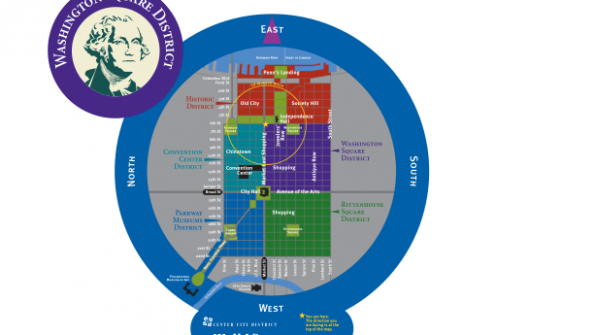Wayfinding, urban design and the brain
Atlanta is a knot of interstates and Peachtree streets. Los Angeles has no discernable grid pattern or comprehensive transit system. D.C. is full of one-way streets and diagonal boulevards. In a word, these cities are counterintuitive.
Could the science and art of wayfinding help city planners design smarter urban landscapes?
On Monday the Nobel Prize for physiology was awarded to three scientists who shed light on the mechanisms that help our brains navigate us through our surroundings. For the most part, these processes are subconscious, but some cities and local governments are tapping into these internal mapping mechanics to design more intuitive neighborhoods, where people are less likely to get lost, The Washington Post reports.
Many major U.S. cities are famously difficult to navigate, according to CityLab, but way finding can help our minds process these environments in a more natural way.
“Architectural signage and wayfinding isn’t about building a nicely designed sign,” Sue Labouvie, a wayfinding expert and president of Studio L’Image told CityLab. “It’s about the information content and the analysis of the space or place that you’re trying to move people through, and coming up with a strategy of how you make this big complex thing simple and understandable to the user.”
Philadelphia launched one of the first urban wayfinding projects in 1995. Walk!Philadelphia was designed to help visually guide pedestrians through the city. As part of a larger $26 million streetscape improvement project, Walk!Philadelphia is one of the largest comprehensive pedestrian signage systems in North America, according to project materials. It relies on “disk maps” – simplified diagrams of the city streets oriented in the direction the pedestrian is facing, and “directionals” – color-coded signs located at each street corner with arrows indicating the direction of landmarks and attractions in a two- to five- block radius.
However signage is just one means of wayfinding. Infrastructure and design can help pedestrians move about a city efficiently. Sidewalks tell walkers they are welcome in a particular area. Public art will draw people toward it. Lighting helps people feel safe. All of these factors can aid the subconscious brain in moving through an urban landscape, CityLab reports.
However, our preferred means of transportation could be confusing our brain’s mapping system, Mayank Mehta, a University of California neurophysicist, told The Washington Post.
The human mind evolved to understand space and navigation while moving at a slow pace – while walking. "The fastest we learned to process the world go by was the fastest a human could run," Mehta told the paper. "In a car, the world goes way faster than that," confounding these processes. In fact, studies have shown that children who travel by car often feel disconnected and spatially confused.
To learn more about cutting-edge wayfinding and “urban graphic design” methodology, click here.
_____________
To get connected and stay up-to-date with similar content from American City & County:
Like us on Facebook
Follow us on Twitter
Watch us on Youtube




















